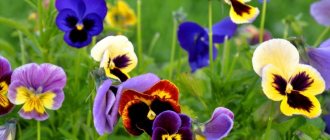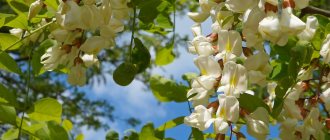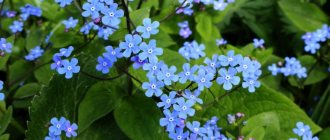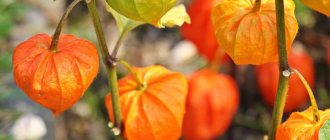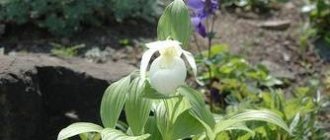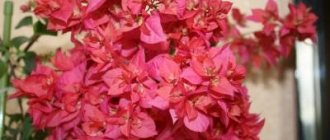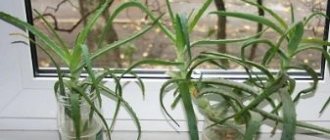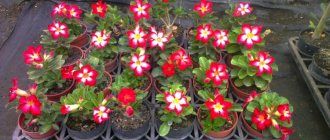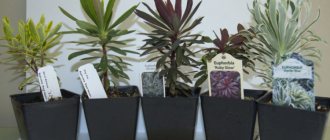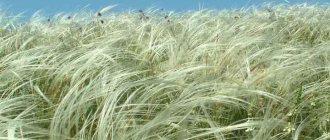Field chamomile is considered one of the most popular crops. She looks very attractive. In addition, the plant is often used for medicinal purposes. Its flowers and stems contain many valuable components. Therefore, the flower can be used to treat a variety of diseases.
Field chamomile looks very decorative and contains many valuable substances.
Botanical description and features
Field chamomile is a small flower that is distinguished by its taproots. Inflorescences are presented in the form of baskets. At the same time, the number of chamomile petals varies - from 10 to 34 pieces. How much exactly depends on the variety.
Flowering begins in the first half of summer and lasts until cold weather. Under natural conditions, this plant is found in different regions of Russia. In most cases, the flower grows near roadsides and in vacant lots. Field chamomile often grows near cornflowers.
If you plant a crop in your country house, you need to control its spread. The fact is that after flowering a lot of seeds appear on the bushes.
A distinctive feature of this variety is considered to be high resistance to cold. In addition, the plant has excellent adaptive characteristics.
Field chamomile can be grown in sandy, alkaline and well-drained soil. The easiest way to propagate it is by seed. For a culture to develop well, it requires a sufficient amount of light. When planting, the seeds should be deepened into the soil by a maximum of 1 cm.
Flowering of the plant begins in the first half of summer.
Types of beautiful daisies
Gardeners often grow these low-maintenance plants on their plots. Below in the article we will list several varieties of chamomile that will be a wonderful decoration for any flower bed, as well as a brief description of them.
Chamomile without tongue is a herbaceous, annual plant with a pronounced fragrant aroma, for which it began to be called fragrant. This chamomile does not have white petals, unlike other daisies. The core of these flowers, the inflorescence, has a rich yellowish-green color and a more convex structure.
Another distinctive feature is a lot of thin string-like leaves, densely sitting on a thick stem, which gives the flower a denser and fluffy appearance. These flowers cannot tolerate shade and love open sunny space, which is why they are often found on roadsides, wastelands, abandoned and crumbling areas, which are characterized by a complete absence of trees and weak vegetation cover. In the garden, the pleasant greenery of the annual will highlight the brightness of other flowers.
Important! Fragrant chamomile is used as an antiseptic, analgesic and sedative in folk medicine, which is recommended to be used with caution, as there are contraindications.
Felice
Blue perennial daisy, or amelliform Felicia, is native to South Africa, where it grows wild. In Russia it is bred by gardeners. The unusual coloring of the petals for chamomile, from soft turquoise to rich blue shades, sometimes with purple veins, goes well in a flower bed with yellow flowers.
This small plant, up to half a meter tall, has small leaves that are hardly noticeable under large inflorescences 5 cm in diameter. Blue chamomile grows in abundant and long-flowering bushes. Blue Felicia needs regular moderate watering and feeding at least once every three weeks.
Berger
For your information! Amelliform Felicia is a perennial plant, unlike its fellow blue daisy Bergera. Bergera is a miniature annual plant with delicate petals in all shades of blue. It grows only up to 20 cm in height.
Meadow chamomile, or cornflower, usually grows in bushes up to 80 cm high, depending on weather conditions. Each branch on the stem of such a plant necessarily ends in a white-yellow inflorescence. They begin to bloom profusely and for a long time in the first months of summer, less often they can bloom again in the second half of August.
Cornflower is a perennial plant that grows quickly throughout the area. Therefore, it is recommended to separate and plant the roots every three years in the spring or at the end of summer after flowering. If this is not done, the chamomile may die in the fourth year.
The plant requires moderate watering, open light spaces and frequent loosening of the soil.
Note! Cut cornflower flowers will make a beautiful bouquet that will last up to 10 days.
Ordinary
Common chamomile mainly grows in meadows, but it takes root well in garden plots after sowing seeds of wild flowers. This is an annual. Inflorescences up to 3 cm in diameter have a pleasant fragrant aroma.
It has healing properties such as antibacterial, sedative, analgesic, antihistamine, and hemostatic. To make a decoction, common chamomile flowers need to be prepared correctly. The first step is to cut off the inflorescences that are already beginning to fade. Next, the flowers are laid out in a thin layer on paper, which is recommended to be holed, and dried on a table under a ventilated canopy without access to sunlight.
Important! It is not recommended to cut flowers for drying in meadows located near roads, landfills, or livestock farms. In such plants, the benefits will be overshadowed by the harmful substances with which they are saturated.
What does Roman chamomile help with?
Roman chamomile, or navel, is a low-growing perennial that is not afraid of frost. This grass is popularly called field grass due to its creeping roots and miniature size. Roman chamomile smells somewhat like an apple. Dried bunches used to be hung from the ceiling and served as a kind of air freshener, which also drove insects away from the room. It differs from the common Roman chamomile in the aroma and shape of the core (in the navel it is more convex and voluminous). In Russia it is found only in Crimea.
Note! Dried flowers can be used either internally or as a poultice. Decoctions from inflorescences are useful to drink to strengthen the nervous system, they relieve pain during migraines, menstruation, and are used in the treatment of colds and gastrointestinal diseases. In cosmetology it is used as a moisturizing, cleansing and healing component in face and hand skin care products.
Varieties
Chamomiles are wild flowers that come in many varieties. They differ in names, appearance, description of properties.
Lugovaya
This plant is also called common cornflower. It reaches 1 m in height. At the same time, the flowers can be 7 cm in diameter. In the middle of the flower there is a yellow center. The petals are elongated and white in color.
This variety is often used by gardeners to decorate gardens and create landscape compositions.
Meadow chamomile is quite large in size.
Lesnaya
This type of flower is characterized by a pronounced aroma. Forest daisies have an attractive appearance, white elongated petals and a yellow center. The height of the plant reaches 30 cm.
The crop can be propagated by seed or by dividing the rhizome.
Pharmacy
The stem of the plant is 50 cm high. Chamomile boasts small leaves. All plants of this species bloom at the same time, which helps to obtain a flowering carpet.
This group includes a number of chamomile varieties:
- southern;
- Caucasian;
- golden;
- rough-fruited.
A distinctive feature of the culture is its distinct aroma. It is exuded not only by flowers, but also by leaves.
Chamomile contains a number of useful components.
Small field
Small field chamomile is a common plant that belongs to the Asteraceae family. The culture is most often found in gardens, fields and flower beds. The height of the bushes usually does not exceed 40 cm.
The plant is a perennial. It is often used in medicine, cooking, and cosmetology.
Flowering begins in the first half of June and continues until frost. The culture is characterized by high frost resistance.
Where do daisies grow?
Chamomiles have very small seeds that are easily blown by the wind over long distances, so glades or individual bushes of these flowers can be seen in almost any area of the world. Unpretentiousness and the ability to adapt to any conditions play a key role in the widespread distribution of these plants.
These flowers can be found throughout the Eurasian continent, in Australia, southern Africa and America. Wild daisies are frequent companions of roadsides, bright sunny meadows and foothills. In addition, representatives of the Astrovs have long charmed gardeners with their beauty and ease of care.
What does the plant contain?
The most useful parts of the plant include the flowers and tops. There is a maximum amount of vitamins and microelements.
The most valuable components of the medicinal plant include the following:
- essential oils;
- chamazulene;
- apigenin;
- coumarins;
- sterols;
- organic acids;
- carotene;
- flavonoids;
- gum;
- multivitamins;
- polysaccharides;
- tanning components;
- ascorbic acid.
Chamomile oil is often used to make natural cosmetics. Such agents have antiseptic and anti-inflammatory properties.
Chamomile oil is extremely beneficial
Traditional medicine recipes
There are a large number of folk remedies using chamomile. Here are some healing recipes:
- For diarrhea, intestinal and stomach colic, as well as for various spasms of the gastrointestinal tract and gastritis, the following recipe is used. Pour 1-2 teaspoons of dry chamomile into a glass of water and leave for 15 minutes. Take this decoction one tablespoon 3 times a day. The course of treatment lasts one week.
- For a sore throat, the following recipe will be very effective. Mix two teaspoons of dry chamomile and linden blossom and pour 500 ml of boiling water. Leave for no more than 30 minutes. Strain the broth and gargle 3-4 times a day.
- For arthritis and arthrosis, rheumatism of the joints, to relieve heaviness and pain, baths with chamomile decoction are an excellent remedy. Pour 200 g of raw material with 3 liters of water. Bring this entire liquid mass to a boil over low heat, then pour into a container. Carry out the procedure for 15-20 minutes.
Medicinal properties and contraindications
Due to the high content of valuable components, field chamomile has a whole range of beneficial properties. With the help of this plant it is possible to achieve the following effects:
- improve appetite and normalize food absorption;
- disinfect skin lesions;
- strengthen the immune system and protect the body from germs and infections;
- relieve allergy symptoms;
- reduce emotional stress;
- cope with inflammation, spasms and bleeding;
- eliminate female diseases of the uterus and ovaries;
- normalize stool in case of poisoning;
- restore proper functioning of the kidneys, stomach, liver;
- cleanse the skin, make it smoother and velvety;
- stimulate hair growth and activate the functions of hair follicles.
Chamomile tea brings great benefits to the body.
Although chamomile has many beneficial properties, it also has a number of contraindications.
The main restrictions include the following:
- Pregnancy. The plant can provoke the synthesis of estrogens - female sex hormones. Therefore, its use can cause changes in hormonal levels. During lactation, you also need to be careful when using chamomile-based products.
- Chronic pathologies. If they are present, you should definitely consult a doctor. For some diagnoses, chamomile cannot be used.
- Individual intolerance. In this case, there is a risk of swelling and bronchospasms.
Excessive and uncontrolled use of chamomile-based products can cause headaches, vomiting, and bleeding. There is also a risk of increased blood pressure.
It is best to collect flowers on the 5th day after blooming.
Colors
Representatives of different varieties differ not only in size, but also in the shades of inflorescences. Their color range is very wide and varied.
- All varieties of cornflower or gigantic chamomile, as it is also called, have a white inflorescence . The bright yellow center is surrounded by white petals, varying in shape and number for each variety.
- Brightly colored inflorescences are found among pyrethrums. The yellow core rises above a rosette of large leaves surrounded by petals (reed flowers) of white, hot pink, crimson, lilac, purple, red and even burgundy.
- Doronicum is characterized by yellow inflorescences. The shades of reed flowers vary from lemon yellow to orange.
- Antemis or navel tincture has characteristic bright yellow inflorescences.
The bright and varied palette of garden daisies allows every gardener to choose a variety of almost any shade.
Collection recommendations
Harvesting chamomile is easy. The optimal period for harvesting raw materials is when the plant is flowering.
Experienced herbalists advise collecting chamomile on the 5th day after blooming. At this moment, the petals are in a horizontal position, and the middle is not fully open. It is at this time that chamomile contains the maximum amount of valuable components.
To obtain high-quality raw materials, it is important to collect them correctly.
Flowers should only be collected in dry and warm weather. The inflorescences must be carefully separated from the stems. This can be done manually or using a special tool. You should not pull out bushes with roots.
The culture blooms from early summer to late autumn. During the growing season, flowers can be collected 3 times. After flowering is completed, the plant loses its benefits. Therefore, it is pointless to use it for preparations.
It is not recommended to collect raw materials in contaminated areas. This should not be done along roadsides or near industrial enterprises.
Reproduction methods
Decorative daisies reproduce in two ways - by seeds and by dividing the bush.
Bush dividing method:
- The procedure is carried out at the end of September - the first week of October, always on a cool and cloudy day.
- One part with the root system is separated from the mother bush and transplanted into a previously prepared hole. Before planting, the hole is watered with settled or rainwater. Side shoots should be cut with a clean, disinfected tool.
- The hole with the cut part is filled with a nutritious soil mixture, which is then lightly compacted.
When propagating by division, only the healthy, young and strongest shoots are cut off. Next year, shoots from the opposite side will need to be cut off from the same mother bush.
Growing daisies in the same place is allowed for no more than 5 years, then the location for the flowers needs to be changed, otherwise they will begin to weaken and may stop blooming.
Propagation of a flower by seed means the correct collection of seed material, with its further use for seedlings:
- Seeds are collected from completely dried flowers. The flowers are cut and left in a dry place with good ventilation.
- The seed material is contained in tubular flowers, from which it is hatched when the daisies are completely dry.
- The seeds are winnowed and stored in a paper bag.
The use of collected seeds for seedlings is possible for several years. Seeds can be immediately planted in open ground.
Sometimes chamomile is planted before winter
Planting can be done even before winter - the seed will not freeze, but on the contrary, it will undergo stratification, making future plants stronger.
Only ordinary chamomiles can be propagated by seeds. Varietal and double representatives of the plant do not retain parental characteristics in the seeds.
How to store it correctly?
Its benefits depend on the correct drying of the plant. If you are collecting only flowers without stems, they should be spread evenly in one layer on a clean surface. It is important to avoid direct sunlight on the raw materials. It is imperative to ensure adequate air circulation.
If the flower was collected with a stem, the plants can be tied into bunches and hung in a dry and dark room. In this case, you also need to ensure good ventilation.
To dry the flowers evenly, they need to be constantly turned over. Drying time is usually a maximum of 2 weeks. From 1 kg of fresh plants it is possible to obtain approximately 250 g of dry raw materials.
The finished product should be completely dry and rustling.
Experts do not recommend drying crops in electric dryers and cabinets. Heat treatment leads to the loss of most of the nutrients.
Flowers can be kept in glass jars.
At the final stage, you need to prepare the chamomile for storage. In this case, it is permissible to use the following options:
- Cardboard boxes. This is the simplest option. It is recommended to store raw materials in a dark and well-ventilated place. It is important to ensure that the room is cool enough.
- Textile bags. In such a situation, it is recommended to use bags made of natural fabrics. They must be unpainted. Dried raw materials should be placed in containers and hung on the walls. This will help maintain its shape and benefits.
- Glass jars. In them, dried raw materials look very decorative. If the containers are beautifully decorated, they can be used as part of the interior.
Diseases and pests - methods of combating them
Diseases to which chamomiles are susceptible if not properly cared for:
- Fusarium is a fungus that causes root rot. Signs - tissues become brown, shoots become thinner and weaker.
- Powdery mildew is the appearance of a white coating on a flower, which gradually becomes brown.
- Gray rot is the formation of brown spots on leaf blades that rapidly increase in size. Gradually, the leaf part of the plant turns completely yellow.
- Rust is the appearance of dark yellow, dense spots on the foliage.
To treat chamomile diseases, fungicides are used - Kuproxat, Oxychom, Fundazol.
Preventing the occurrence of diseases - following the rules of watering, without waterlogging the soil, timely loosening the soil and weeding.
Insects:
- thrips, aphids - the appearance of light yellow spots on the leaf blades, the gradual death of the soft tissues of the plant;
- wireworms - damage the root system, leading to the death of the entire bush;
- star-winged fly - accumulates on the middle flowers, sucking the juices from the plant.
Insecticides are used to get rid of insects. Measures to prevent the appearance of parasites include proper plant care, timely removal of weeds, preventive treatment with insecticides, otherwise the flower will not be able to grow strong and beautiful.
Diseases must be combated immediately when the first signs appear, otherwise the chamomile bush will quickly die
Interesting Facts
There are many songs, ditties, fairy tales and sayings about the field chamomile, a flower associated with Russian nature. In the old days, these plants were called navels because of their yellow navel. Field chamomile also had several names in Rus', all of them were invented by herbalists: roman herb, roman flower.
In Tibetan medicine, this plant is considered a miraculous remedy for rejuvenation. Chamomile tea is a cult attribute. Every day, the monks drink this healing drink before going to bed, keeping the secret of its preparation secret.
In nature, field chamomile is also a plant protector. If you plant chamomile seeds around an apple tree, then its fruits are not afraid of the codling moth. There will never be white moth and cabbage cutworm caterpillars in the garden if chamomile grows there.
Here it is, field chamomile!
origin of name
In the ancient world, the chamomile plant was known as chamaemelon, which translated from ancient Greek means “earth apple.” Chamomile was so named due to the aroma of its flowers, reminiscent of the smell of apples. In medieval Europe, the plant was called chamaemelon romana, the second word indicating the ancient Roman origin of the name.
In Russian, romana was transformed into “novel”, “romannik”, “romanov color”. By the end of the 18th century, the diminutive form of these names, “chamomile,” became widespread.
The scientific name Matricaria chamomilla was assigned to the plant in the 18th century. A doctor and botanist from Switzerland, Albrecht von Haller, decided to name one of the genera of the Asteraceae family - Matricaria, taking as a basis the Latin name for the uterus - matrix.
This word was not chosen by chance, because a close relative of chamomile, non-odorous chamomile, has long been used to treat gynecological diseases. Subsequently, three-rib was isolated into a separate genus, and the name that appeared, thanks to it, went to the genus of the Astrov family, to which chamomile belongs.
The specific name chamomilla was introduced into the botanical classification by the Swedish botanist Carl Linnaeus, taking the Latin name chamaemelon as a basis.
For what diseases is it useful?
Chamomile can be used as a complement to primary treatment for a wide variety of diseases:
- diseases of the stomach and intestines;
- gastritis;
- ulcers;
- colitis;
- flatulence;
- liver and gallbladder diseases.
Externally this plant is used for:
- allergic dermatitis;
- periodontitis;
- sore throat;
- colds;
- cough;
- flu
The use of this flower increases the body's immunity, improves appetite during illness and speeds up digestion, which means it allows you to quickly remove harmful viruses and bacteria.
If desired, it can be combined with other medicinal herbs, for example, calendula or yarrow.
Possible side effects
If the recommended dosage is followed, adverse reactions to taking chamomile preparations rarely occur. Since chamomile oil has a more pronounced effect than a water infusion, its use is more likely to cause side effects. Not excluded:
- skin allergic reactions;
- diarrhea;
- nausea and vomiting.
When using chamomile preparations, you must follow the dosage indicated in the instructions, otherwise you can harm the body. An overdose can manifest itself as headache, weakness, and tachycardia.
If recommended doses are exceeded for a long time, depression of the central nervous system and decreased muscle tone are possible.
